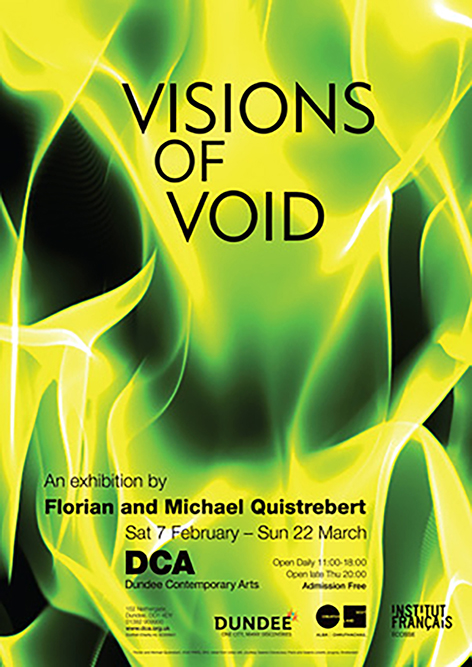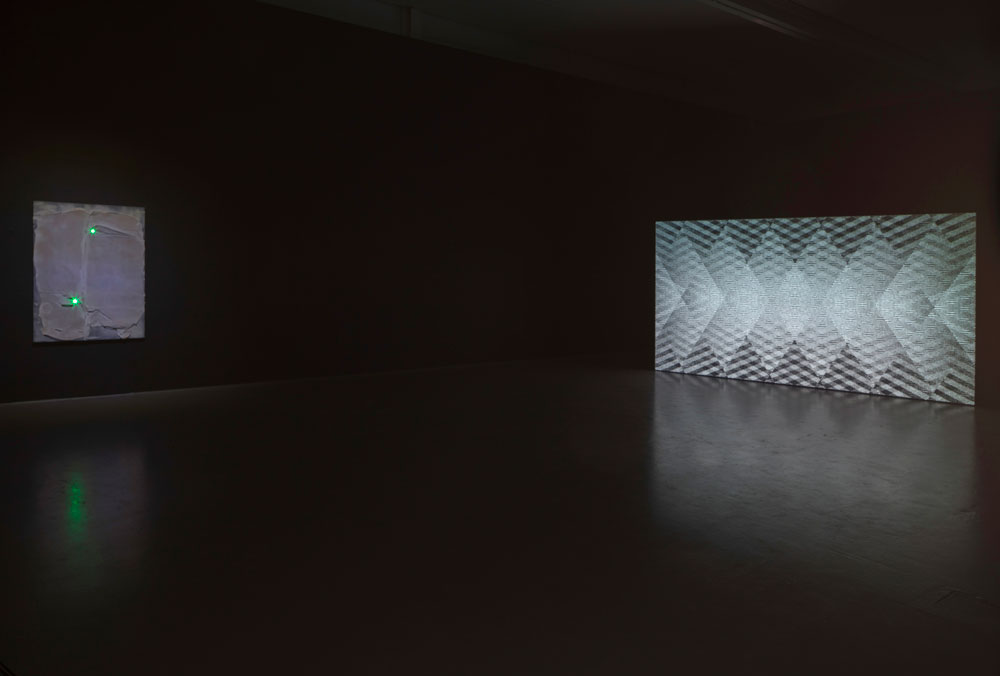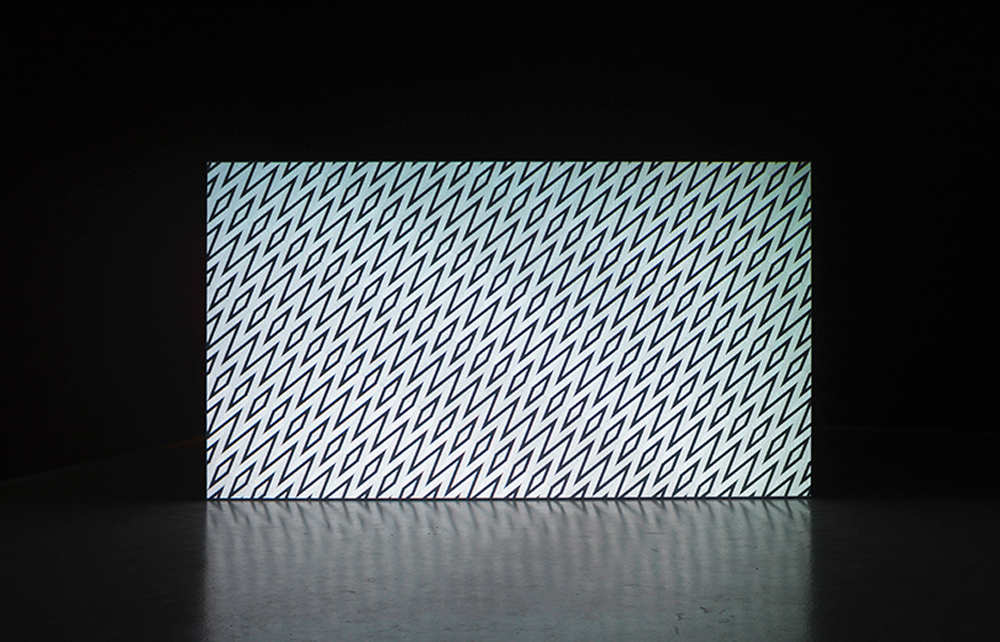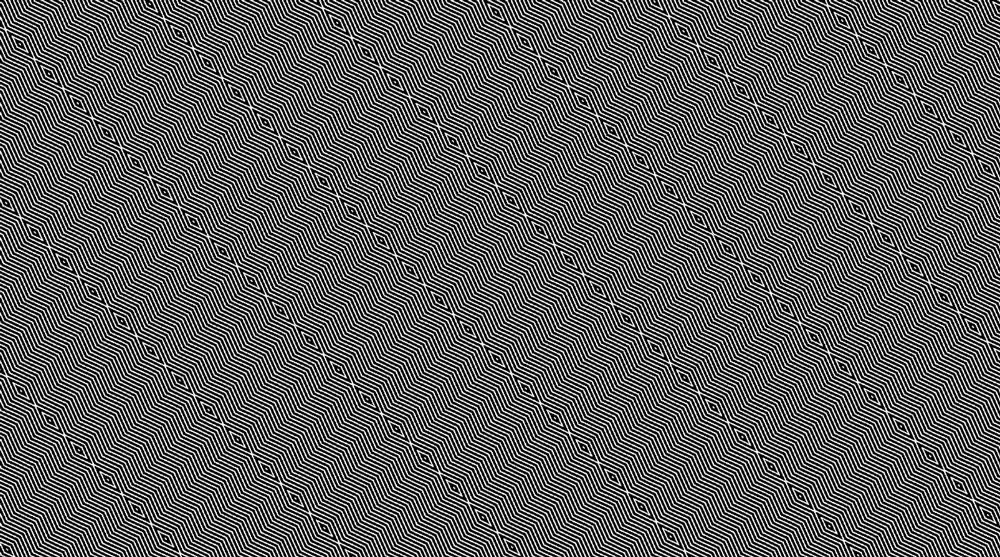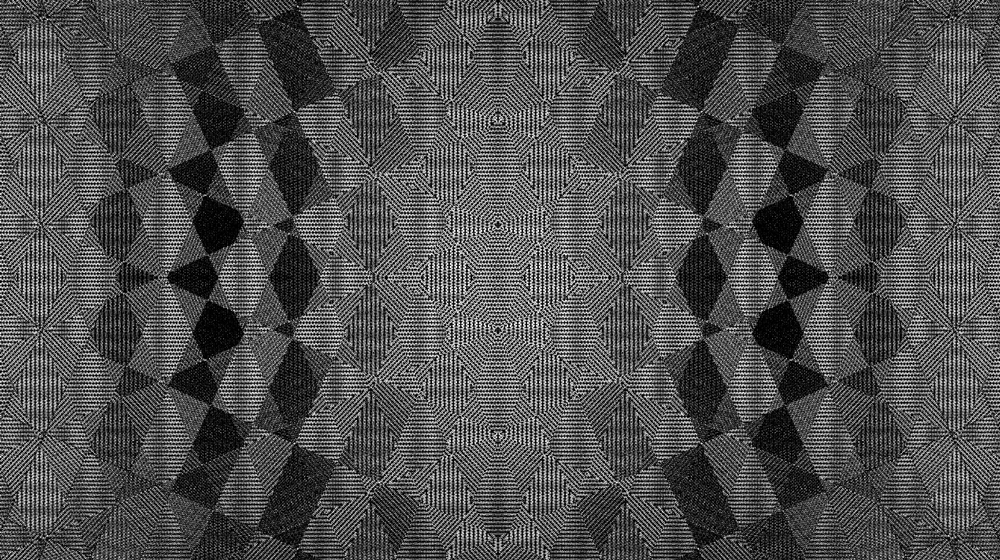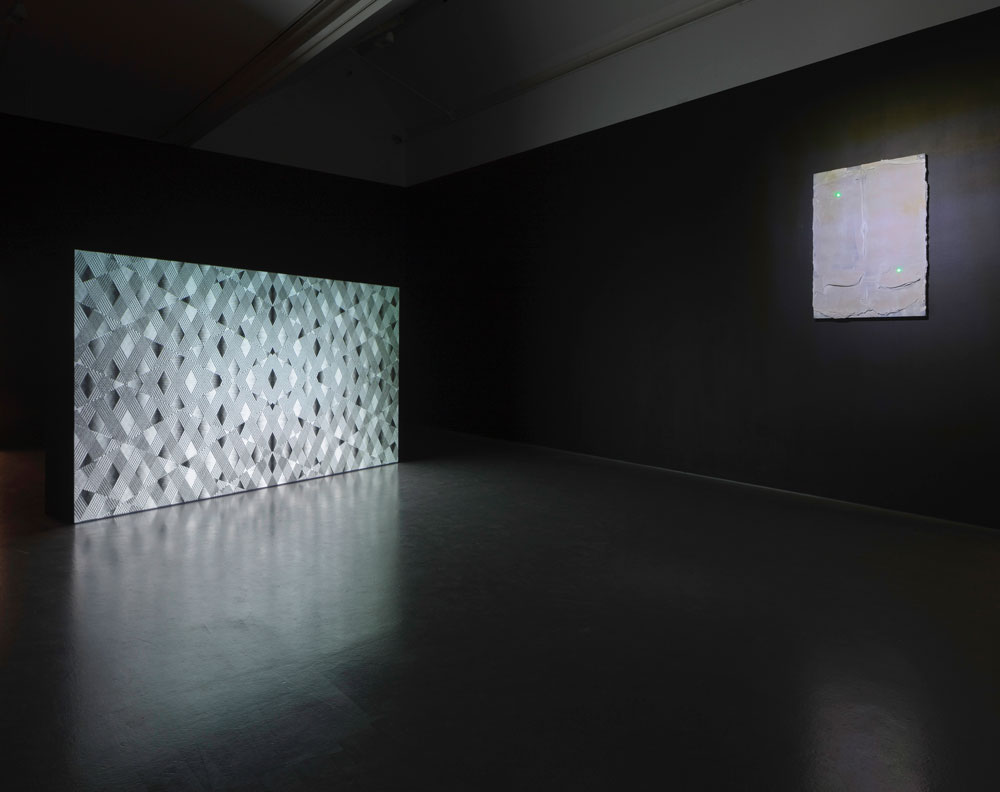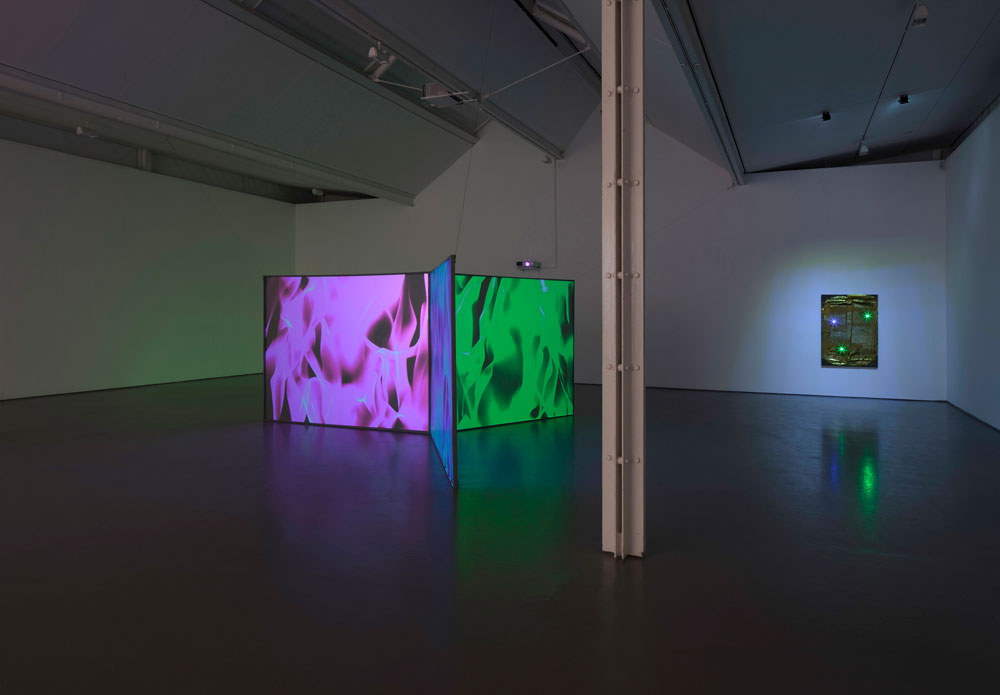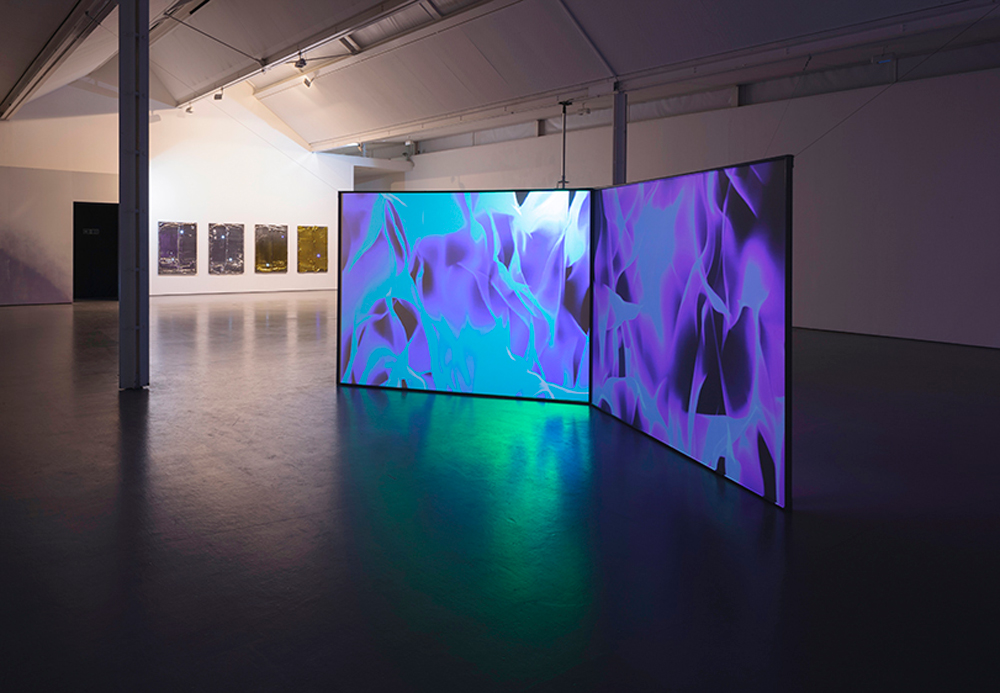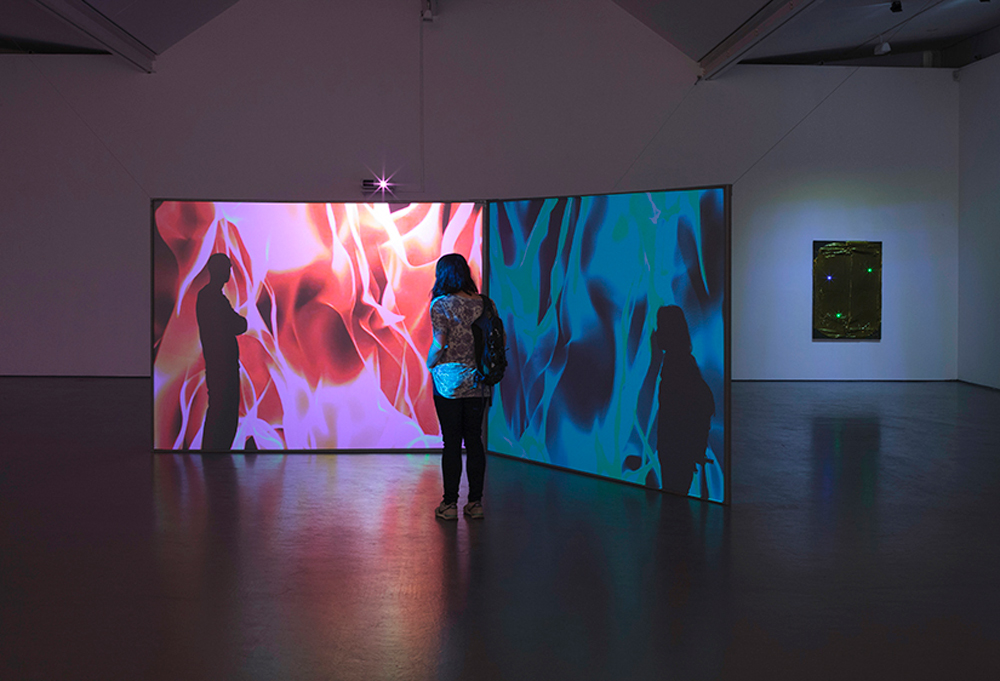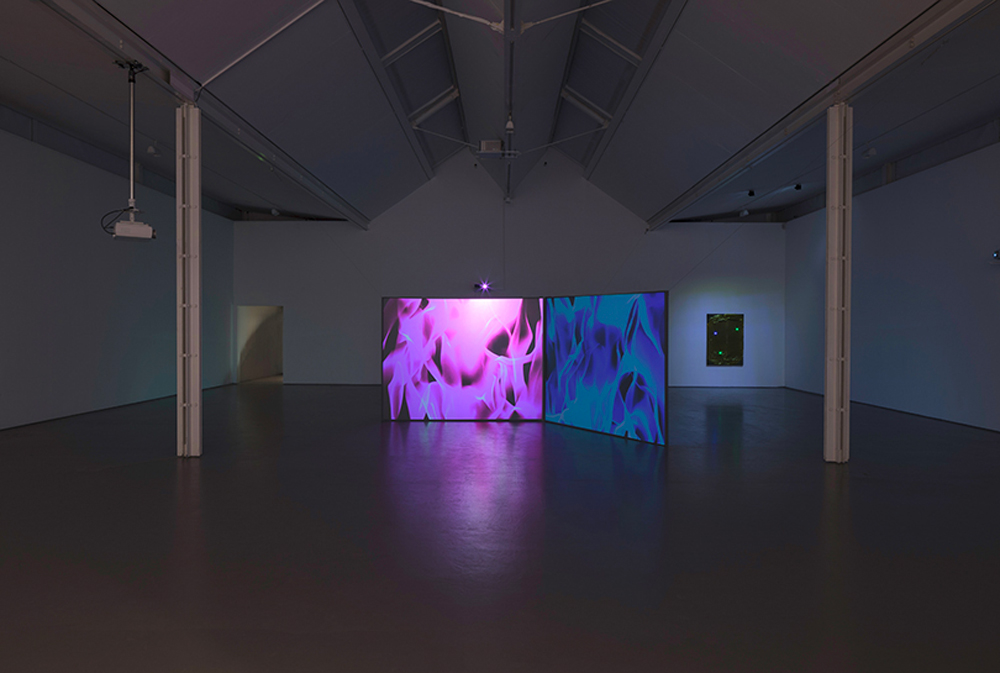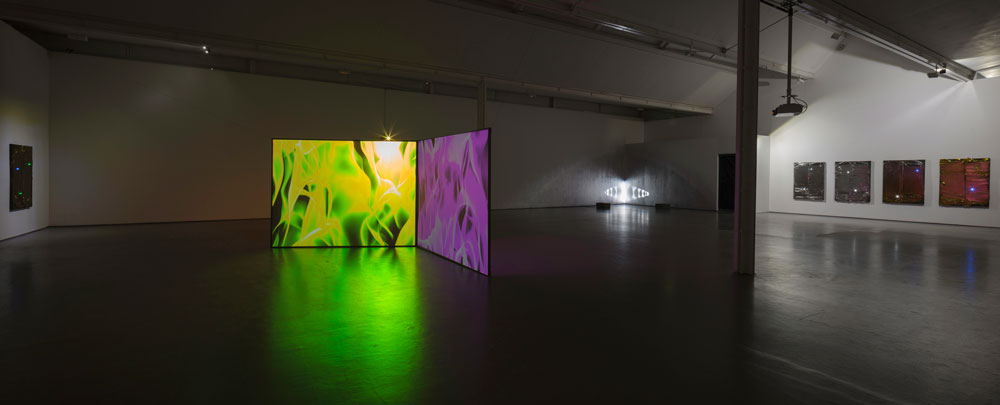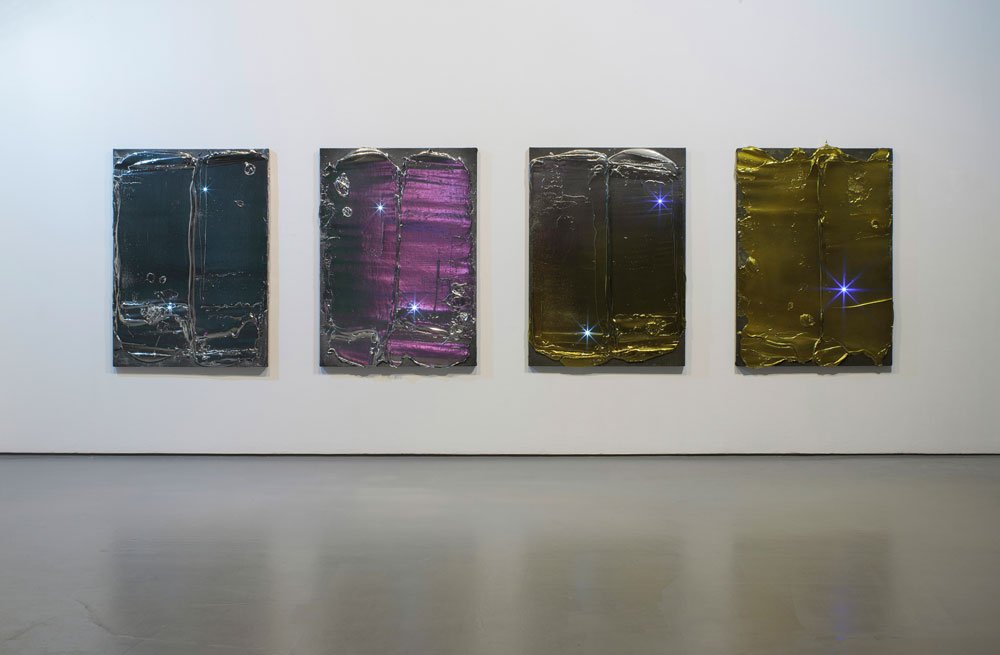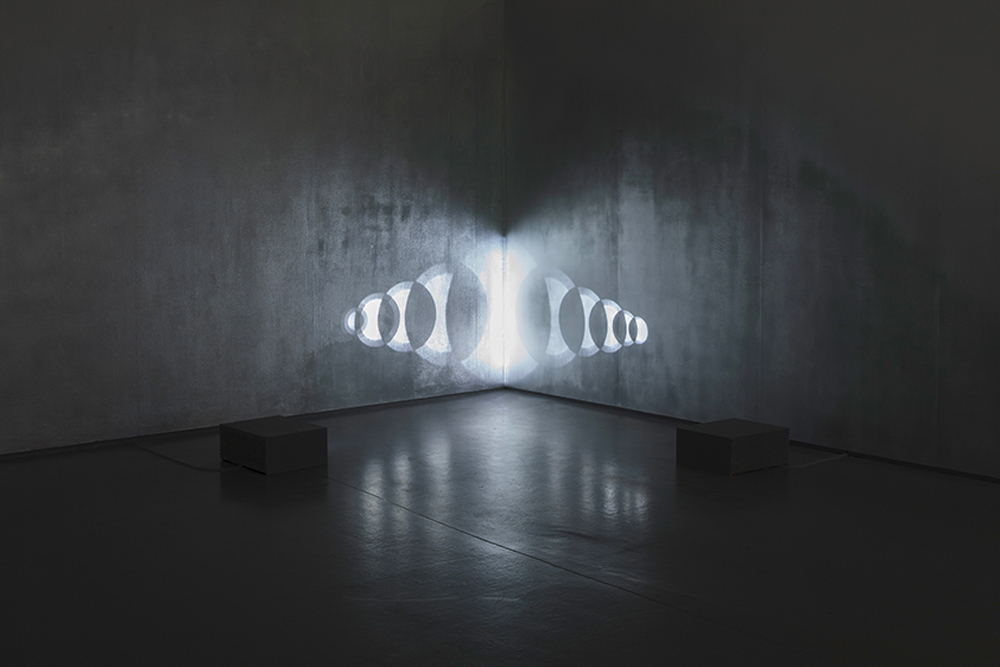VISIONS OF VOID
Curator : Graham Donke
Dundee Contemporary Arts (UK) 2015
photo © Ruth Clark
Florian and Michael Quistrebert: Visions of Void
Dundee Contemporary Arts, Dundee
7 February - 22 March 2015
Review by Alexander Hetherington
DCA presents a selection of video and paintings by the collaborative French brothers Michael and Florian Quistrebert who are based in Paris and Amsterdam. It is an exhibition of sparse transmissions - surfaces, reflections and shadows - staged over two spaces, and dominated by works in either monochrome or slick metallic and fluorescent colour.
Two paintings in matte grey modelling paste solidify a heavy impasto gesture and are set with tiny green LED lights, which on closer inspection highlight the painting’s glittery surfaces and the mannered nature of the physical actions of their fabrication. These expressionist concrete forms are offset by a video projection, disconcerting in its constant flickering change, evolving speed and mutating monochrome gradients. What at first seems like TV static, like chaos, is in actuality assembled from small units of repeated patterns. It shifts from stroboscopic to claustrophobic optical illusions, from mesmerising revolutions (like the Vertigo record company logo) to subliminal frequencies. Here the brothers’ geometric forms, machine-made infinite and complex arrangements produced from lines of computer code made visual by simple tiny glimmering pixels, make references to Op and Pop Art.
The colour space houses a sequence of gold and silver modelling paste paintings similarly rendered with tiny lights. Their thick impasto lustrous landscape-like surfaces have a suggestion of the Boyle Family finding an alien hi-camp science-fiction site in their randomly selected isolated geography, or Anselm Reyle’s glamorous silver foil abstractions in the ‘Trilogy of Broken Light’ (2004). The space though is dominated by an evolving colour three-screen video projection of a smoke machine (a smoke screen?). It recalls Pae White’s ‘Smoke Knows’ (2009) rendered with changing effervescent Warhol-like or theatre gel colourisations.
A second video projection, featuring looping and overlapping geometric shapes on a silver and purple aerosol-sprayed wall, plays with messages from the occult. It brings to mind Douglas Gordon’s ‘Black Star’ (2002), a diabolical invocation with five white neon tubes creating the shape of a pentagram. Meanwhile a small painting hidden in a secluded gallery alcove mirrors these simple geometries, painted in regulated monochrome angular gradients.
The exhibition’s accompanying text reveals veils of quotations, titles and acknowledgements from 20th century art history in the duo’s practice that creates a kind of sentimentality for Modernism. Work in the exhibition is cross-referenced with Marcel Duchamp, Paul Klee, Bridget Riley and Laszlo Moholoy-Nagy among others. A separate but complimentary installation of their video work in the opulent rooms at Institut Francais in Edinburgh further enhances a sense of works interspersed by or decorating elegant empty spaces.
‘Visions of Void’ seeks to mirror DCA’s industrial-stylised architecture and our human occupation of it. It makes more evident the building’s brickwork, lengths of tall and wide white surfaces, heavy metal joints and supports, and polished silver and cold chrome fittings. Reinforcing this encounter between spectator and the built environment the brothers have selected to screen Gaspar Noé’s 2009 motion picture ‘Enter the Void’ in the gallery’s cinema space – a psychedelic and unnerving point-of-view trip from birth to death and beyond in the harsh neon haze of futuristic Tokyo.
